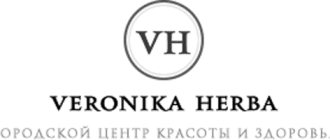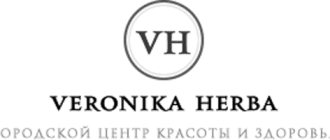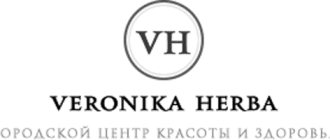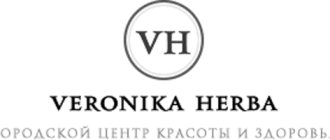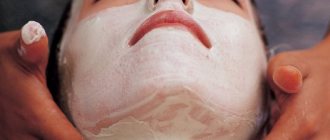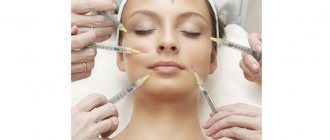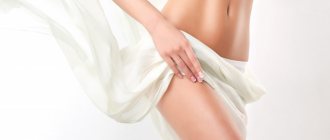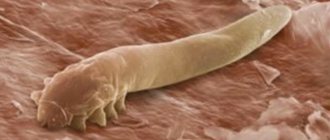The problem of increased sweating, or hyperhidrosis, today worries many people of different ages and professions. Constant stress and a busy lifestyle, synthetic clothing exacerbate this problem. Often the inability to wear the desired clothes, discomfort when noticeable circles appear in the armpits, an unpleasant odor, the inability to take off shoes or shake hands - all this affects communication, and in public professions it can even hinder career growth and reduce the quality of life.
Increased sweating is an important problem in medicine, including aesthetics. In addition, hyperhidrosis of the feet is often accompanied by mycoses - fungal infections of the skin, which requires serious long-term treatment.
With the onset of the summer season, this problem becomes more pressing, because vacation and travel are ahead!
Treatment of excessive sweating
Treatment of the cause of increased sweating should be carried out jointly with an endocrinologist and therapist. However, the long period and difficulty of treating this disease only burdens a person’s adaptation in modern society. The use of Botox for hyperhidrosis is not contraindicated in these conditions and is the method of choice.
The most common home control methods are deodorants and antiperspirants. However, stained clothing, frequent allergic reactions and short-term effects limit their use.
How to get rid of sweaty hands?
How to remove and reduce sweaty hands? Today there are a lot of cosmetological techniques that allow you to do this. It is important to understand that they have a certain duration of effect, which means that the result of minimally invasive procedures will need to be maintained periodically (approximately once every 8-12 months).
In the treatment of sweaty hands, the use of medical antiperspirants is possible, but extremely difficult and inconvenient. In addition, moisture constantly appearing on the palms washes away the active composition of the antiperspirant and its use becomes ineffective. Talc and antiperspirants can protect skin, clothing, and create the illusion of freshness, but they do not affect sweating in any way.
The use of electrophoresis (iontophoresis) can help maintain some dryness of the palms, but the procedures must be carried out regularly over a long period of time.
One of the effective and popular remedies for palmar hyperhidrosis (excessive sweating of the hands) is botulinum therapy or Botox injections.
Botox injections (shots) into the armpits to treat hyperhidrosis
| The use of botulinum toxin preparations (Botox, Dysport) for increased sweating (axillary, palmar, plantar) is the safest, and sometimes the only possible (for example, with plantar hyperhidrosis) method of treating increased sweating. Other methods are ineffective and have significant limitations in application. |
The action of the drugs is associated with a blockade of the transmission of nerve impulses to the sweat glands, which completely eliminates sweating in the treated area. Botox in the armpits is one of the most popular procedures that can significantly improve the quality of life. Every day the number of patients using this service is growing steadily. On average, about 60-100 units are used. the drug for 2 anatomical zones (axillary areas, or palms, or soles). The amount of the drug is determined at a doctor’s consultation depending on the degree of sweating, the patient’s age, and the presence of concomitant diseases.
The procedure is a superficial chipping of the required area. It is absolutely painless and takes no more than 15 minutes. The effect occurs 3-7 days after the injection and lasts 6-12 months.
Question answer
Marina! You should have had a second copy of that “piece of paper” in your hands - they are called informed consent.
In addition, you must have a second copy of the contract for the provision of medical services.
The contract will help you prove that in this clinic and this particular doctor gave you an injection of botulinum toxin.
The signed informed consent will show whether you knew what kind of procedure you were going for and what the consequences might be after the injection.
If there is an agreement, but the informed consent does not say anything about what exactly you were injected with, what effect the drug has and for how long, there are no warnings about contraindications, etc., then you can safely demand money from the clinic, because, according to According to the Law on Consumer Rights and the Fundamentals of Legislation on the Protection of Citizens' Health, you were required to warn about the consequences.
When injecting botulinum toxin type A, the following is usually written in the informed consent:
I ———, give consent to the injection of the drug (the name of the drug is required).
The doctor informed me about the composition (the name of the drug is required), indications for use of the drug, the mechanism and duration of action, possible side effects and the methodology of the procedure itself. I was informed that (necessarily the name of the drug) represents (pharmacological concept). Available in the form of (name of substance - powder, solution, ointment, etc.) and is used to treat local muscle spasms and smooth out facial wrinkles.
Registration certificate No. ____________, medical technology FS No. _____________________.
- (the name of the drug is required) causes relaxation of tense muscles, which leads to smoothing of facial folds (wrinkles).
- The effect of the drug occurs 3–14 days after injection.
- The effect of the drug lasts about 3-6 months after injection, after which a second injection is possible.
- Additional correction is possible 14–21 days after the procedure.
- With intradermal administration, it is possible to reduce sweating in the injection area.
Possible complications:
- Eyebrow drooping.
- Swelling of the lower eyelids.
- Diplopia.
- Unilateral ptosis of the upper eyelid.
- Pinpoint hemorrhages and pain at injection sites.
All adverse events, as a rule, are rare, develop in the first days after the injection, are mild and transient.
I had the opportunity to receive complete information in response to questions that interested me.
List of contraindications:
Absolute contraindications:
- myasthenic and myasthenic-like syndromes (including Lambert-Eaton syndrome);
- pregnancy, breastfeeding period;
- inflammatory process at the injection site;
- acute phase of infectious diseases;
- hemophilia;
- hypersensitivity to the components of the drug.
Relative contraindications:
- high degree of myopia (according to the doctor’s opinion);
- a history of allergic reactions (especially to drugs containing proteins);
- pronounced gravitational ptosis of facial tissues;
- pronounced “hernias” in the area of the upper and lower eyelids;
- a period of less than 3 months after facial surgery;
- taking antibiotics of the aminoglycoside group, erythromycin, tetracyclines, polymyxins, which enhance the effect of the toxin (if more than 2 weeks have not passed after the course of treatment), drugs that increase the intracellular concentration of calcium (aminopyridine, etc.), benzodiazepines, anticoagulants and antiplatelet agents, and curare-like muscle relaxants ;
- somatic diseases in the acute stage;
- alcohol abuse;
- tendency to form keloid and hypertrophic scars.
In rare cases, individual low sensitivity to the drug is observed.
I informed the doctor in detail about allergic reactions and individual intolerance to medications, foods and other substances, about the diseases and injuries that I had during my life, and about chronic concomitant pathologies. I have provided reliable information about my bad habits and hereditary diseases, as well as about the operations and anesthetic interventions I have undergone.
By my signature, I confirm that I have not previously been injected with injectable drugs of a different composition in the areas intended for correction. Otherwise, after receiving explanations from the doctor, I am responsible for all consequences. The information received is completely clear to me. I was given answers to all the questions I had in connection with the administration procedure (the name of the drug is required), information about it, recommendations before and after it.
And then – the date and signature of the patient.
Minor's test (iodine-starch test)
This is a simple method for diagnosing hyperhidrosis, which allows you to identify areas of greatest sweating before injecting botulinum toxins. The Minor test is most relevant for correcting the results and partially maintaining sweating 10-14 days after the procedure, when an increase in dose is required to completely stop sweating and determine the most resistant zones. During initial injections, the appropriateness of this test is determined at the discretion of the doctor.
The Minor test is carried out in several stages:
1. Apply iodine solution to the intended treatment area.
2. Using cotton pads or sticks, apply starch to a dry surface treated with iodine.
3. After 3-5 minutes, in the areas of greatest sweating, the starch turns blue, which makes it possible to determine the zones of botulinum toxin injection.
Minor's test negative complete correction of hyperhidrosis
| 1. Application of iodine | 2. Applying starch | 3. The test result is negative |
Minor's test is positive; lesions are identified that require additional correction with botulinum toxins
| 1. Application of iodine | 2. Applying starch | 3. The test result is positive |
Fine for working without a license
If a license is needed, but the salon operates without it, the owner will be fined under Part 2 of Article 14.1 of the Code of Administrative Offenses of the Russian Federation. The fines are:
| For individuals | For individual entrepreneurs | For LLC |
| From 2,000 to 2,500 ₽ | From 4,000 to 5,000 ₽ | From 40,000 to 50,000 ₽ |
Small businesses can get by with a warning if they are caught for the first time. But the issue of further provision of services will still have to be resolved. If you continue to work without a license, you will be closed.
Beauty salons are inspected by the prosecutor's office and the police. Usually, an inspection comes as a result of a complaint from a client who, for example, was not given a check. Or competitors: the association of laser cosmetologists filed a police report against one salon. Inspectors look at the price list, advertising on social networks, contracts with clients and interview craftsmen. If you have cosmetic equipment, they will take it as evidence. The arbitration court puts an end to the matter.
Botox in the armpits: price, reviews
Many who suffer from excessive sweating are tormented by the question: “How much does it cost to inject Botox into the armpits?” You will find the answer below in the table and remember that just one procedure will allow you to forget about the unpleasant problem for a period of more than six months!
| Zone | Unit Botox | Unit Dysporta | Price |
| Armpits | 60-100 units | 270-450 units. | 18000-30000 rub. |
| Feet | |||
| Palms |
For women, the minimum dose for the treatment of excessive sweating is 60 units. 30 units each for each armpit, and for men 100 units. 50 units each per zone accordingly. Increasing the dose is necessary if there is too much sweating, when it is often necessary to change clothes several times a day, regardless of the psycho-emotional state and external conditions.
Forget about the annoying problem and start a new life!
Possible causes of palm hyperhidrosis
Only a doctor can find the cause, based on the medical history and, if necessary, test results.
- Possible causes of sweaty hands:
- Stressful state of a person. Nervous tension causes disruption of heat exchange processes, and palms may become damp. This condition usually goes away when the person becomes calm.
- Endocrine diseases. The thyroid gland is involved in thermoregulation of the body. Consultation with a specialist and treatment according to his recommendations are necessary.
- Disruptions in the hormonal system. An examination by a doctor will help you understand the problem.
- Side effects from the use of certain medications, unbalanced diet.
- A natural feature of the body is a fairly common cause of sweaty palms. It does not require mandatory treatment, but successfully resolving the issue of sweating palms will help you forget about a lot of inconvenience. Often sweating of the palms in this case is combined with hyperhidrosis of the feet.
If we are talking about hyperhidrosis of the whole body, be sure to visit a doctor to rule out any diseases.
Hyperhidrosis: what is it?
The formation and secretion of sweat is a feature of the physiology of any person. This way the body is cooled and overheating is prevented. This is a necessary thermoregulation mechanism!
But sweating can be excessive. In this case, the disease is hyperhidrosis. It manifests itself in excessive activity of the sweat glands, that is, in increased excitation of sympathetic fibers that receive a signal from the central nervous system.
There may be a genetic predisposition to hyperhidrosis. It can be caused by stress. Smokers, allergy sufferers, and obese people are also at risk of getting it. Often local forms of hyperhidrosis are associated with vegetative-vascular dystonia and poor personal hygiene.
Due to hyperhidrosis, the skin softens, swells, and its acidity changes. All this opens the gates for fungi and pyogenic flora. Also, people with constantly wet bodies are more prone to colds and infections.
Hyperhidrosis also has its own unpleasant psychological side: embarrassment, complexes, fear of going out in public. Because of this, a person has difficulties in his personal life and at work.
